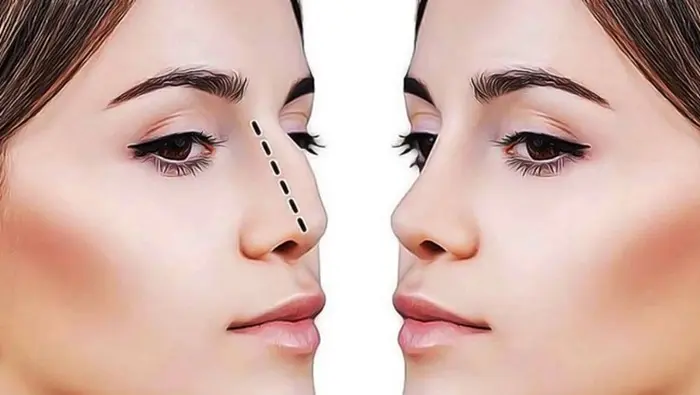Rhinoplasty, commonly known as a nose job, is a popular cosmetic surgery procedure. It can enhance facial harmony, improve nasal function, and boost self-confidence. However, like any surgical procedure, rhinoplasty comes with a recovery period, during which swelling is a common concern. Managing and reducing swelling effectively is crucial for a smooth recovery and optimal results. Here are six ways to reduce swelling after rhinoplasty.
Understanding Post-Rhinoplasty Swelling
Why Swelling Occurs
Swelling is a natural response to surgical trauma. During rhinoplasty, tissues are manipulated, which leads to fluid accumulation and inflammation. This is the body’s way of protecting and healing the affected area.
Phases of Swelling
Swelling after rhinoplasty occurs in phases:
Immediate Post-Operative Swelling: This peaks within the first 48-72 hours after surgery.
Subacute Swelling: This phase can last for several weeks.
Residual Swelling: This is the minor swelling that can persist for several months to a year.
Understanding these phases helps in setting realistic expectations and managing swelling effectively.
1. Cold Compresses
Initial Relief
Applying cold compresses to the nasal area is one of the most effective ways to reduce swelling immediately after surgery. Cold compresses help constrict blood vessels, reducing blood flow to the area and minimizing fluid accumulation.
How to Apply Cold Compresses
Use a clean, soft cloth or a gel pack.
Wrap it in a thin cloth to avoid direct contact with the skin.
Apply it gently to the cheeks and around the eyes, not directly on the nose.
Use cold compresses for 10-15 minutes at a time, several times a day during the first 48 hours.
Precautions
Avoid applying cold compresses directly to the nose to prevent disrupting the surgical site. Always use a barrier to protect the skin from extreme cold.
See Also: 7 Conditions That Can Get You Free Rhinoplasty
2. Keep Your Head Elevated
Gravity Aids Recovery
Keeping your head elevated helps reduce swelling by using gravity to prevent fluid accumulation in the nasal tissues. This simple yet effective measure can significantly enhance your comfort and recovery.
Elevation Techniques
Use Extra Pillows: Sleep with your head elevated on two or more pillows.
Elevate the Head of the Bed: Place bricks or blocks under the legs of the head of the bed to create a slight incline.
Use a Recliner: Sleeping in a recliner can provide the necessary elevation and comfort.
Duration
Maintain head elevation, especially during sleep, for at least the first week after surgery. Some patients find it beneficial to continue this practice for several weeks.
3. Follow a Low-Sodium Diet
Diet and Swelling
Sodium can cause water retention, which exacerbates swelling. A low-sodium diet helps minimize fluid accumulation and promotes faster recovery.
Dietary Tips
Avoid Processed Foods: Processed foods are often high in sodium. Opt for fresh, whole foods instead.
Read Labels: Check food labels for sodium content and choose low-sodium options.
Cook at Home: Preparing meals at home allows you to control the amount of salt added to your food.
Use Herbs and Spices: Enhance flavor with herbs and spices instead of salt.
Hydration
Staying well-hydrated also helps reduce swelling. Drink plenty of water throughout the day to help flush out excess sodium from your body.
4. Take Prescribed Medications
Medications for Swelling
Your surgeon may prescribe medications to help manage swelling and discomfort. These medications can include steroids, anti-inflammatory drugs, and pain relievers.
Types of Medications
Steroids: These can reduce inflammation and swelling. They are usually prescribed for a short duration.
Anti-Inflammatory Drugs: Non-steroidal anti-inflammatory drugs (NSAIDs) can help manage pain and reduce swelling.
Pain Relievers: These help control discomfort, which can indirectly reduce stress-related swelling.
Follow Instructions
Take all medications as prescribed by your surgeon. Do not self-medicate or adjust dosages without consulting your healthcare provider.
5. Avoid Strenuous Activities
Activity and Swelling
Strenuous activities can increase blood flow to the face, exacerbating swelling. It is essential to avoid heavy lifting, vigorous exercise, and activities that increase heart rate during the initial recovery period.
Recommended Activities
Light Walking: Gentle walking can promote circulation and aid in recovery without increasing swelling.
Avoid Bending Over: Bending can increase pressure in the nasal area, so avoid activities that require bending over.
Rest and Relaxation: Prioritize rest and relaxation to allow your body to heal.
Gradual Return to Normal Activities
Gradually resume normal activities as advised by your surgeon. Follow their guidelines on when it is safe to return to exercise and other physical activities.
6. Patience and Time
Healing Process
Swelling after rhinoplasty is a normal part of the healing process. While it can be frustrating, patience is essential. The body needs time to heal, and swelling will gradually subside over the weeks and months following surgery.
Long-Term Expectations
Initial Improvements: You will notice significant improvements in swelling within the first few weeks.
Continued Healing: Subtle changes and reductions in swelling will continue for several months.
Final Results: The final results of your rhinoplasty can take up to a year to become fully apparent.
Follow-Up Appointments
Attend all scheduled follow-up appointments with your surgeon. They will monitor your progress, address any concerns, and provide guidance on managing swelling and other aspects of recovery.
Conclusion
Reducing swelling after rhinoplasty requires a combination of proactive measures and patience. By applying cold compresses, keeping your head elevated, following a low-sodium diet, taking prescribed medications, avoiding strenuous activities, and allowing time for healing, you can effectively manage swelling and ensure a smooth recovery. Always follow your surgeon’s specific instructions and attend follow-up appointments to achieve the best possible results.

